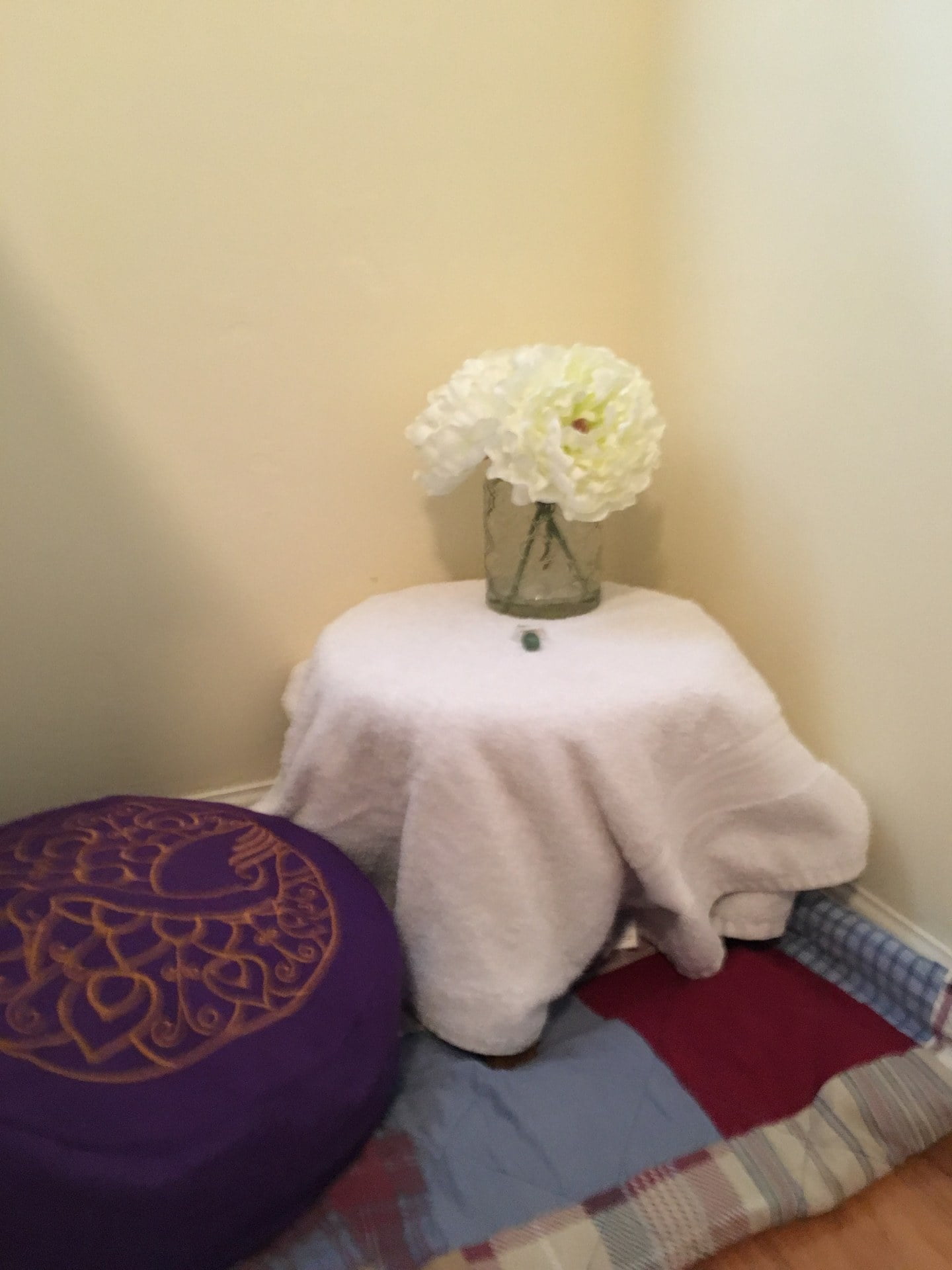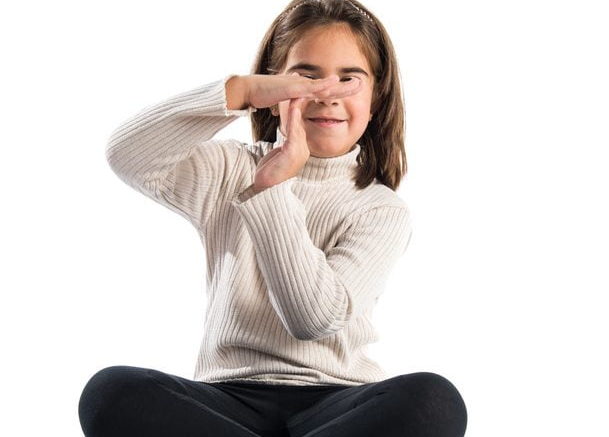My husband got the book: Peaceful Piggy Meditation as a holiday gift for me and the girls, which is a children’s story about the importance of finding some peace and quiet during stressful and anxious times. Â While the book is a good source of encouragement, meditation is not something I explicitly force my girls to do yet, as I’ve noted in previous posts. Â For my children, it would be met with a lot of resistance, and I don’t want them to view meditation as another thing Mommy is making them do. Â I want meditation to be something that they naturally start seeking themselves as they get older when the time is right for them.
 However, I do think there are ways to model quiet, soothing time at home.  One of the ways to do this is by creating a peaceful sanctuary for kids to retreat to when they are upset or having strong emotions.  In the children’s book I mentioned above, the author recommends that parents could help children set up a quiet spot in the house “with a few things…maybe a crystal, for clear thinking, a stone, for stillness, or even a flower, for kindness.” As soon as we read this in the book, my 5-year old had eyes wide open and immediately wanted to create this space in the corner of her room.  We folded up a quilt, and she laid a towel over a small table- with some flowers, a little crystal gem and a stone from her kindness jar.  She even wanted to place my meditation pillow in the corner, although that may not remain there permanently!  🙂  She called this new designated spot in her room- her “peaceful place.”  I asked her when she would want to use it, and she said that she could sit there when she gets angry or upset and take some deep breaths.
However, I do think there are ways to model quiet, soothing time at home.  One of the ways to do this is by creating a peaceful sanctuary for kids to retreat to when they are upset or having strong emotions.  In the children’s book I mentioned above, the author recommends that parents could help children set up a quiet spot in the house “with a few things…maybe a crystal, for clear thinking, a stone, for stillness, or even a flower, for kindness.” As soon as we read this in the book, my 5-year old had eyes wide open and immediately wanted to create this space in the corner of her room.  We folded up a quilt, and she laid a towel over a small table- with some flowers, a little crystal gem and a stone from her kindness jar.  She even wanted to place my meditation pillow in the corner, although that may not remain there permanently!  🙂  She called this new designated spot in her room- her “peaceful place.”  I asked her when she would want to use it, and she said that she could sit there when she gets angry or upset and take some deep breaths.
This “peaceful place” could also be used for “positive time-outs.”  Sending children on a more punitive time out is a common practice for parents.  There are different modes of thought on how effective this is for short-term or long-term discipline. But in the book Positive Discipline by Jane Nelsen, the concept of a “positive time-out” really resonated with me.  This book is a wonderful guide for parents who want to work with their children on self-discipline and problem-solving skills.  In Nelsen’s book, she advocates for a “positive time-out” designated to “help children feel better (so they access their rational brains), not to make them feel worse, not to make them ‘pay’ for what they have done.”  She states that “It is not effective to focus on solutions until everyone has calmed down enough to have to access to their rational brains.”  Her premise is that children will do better, when they feel better, just as adults do, so she recommends more positive parenting measures.  She provides a few guidelines for how to address positive time-outs including:
- Talking to your children about how to use a positive time-out before you use it. Â The idea is that a positive time-out is an opportunity to cool down. It’s important for everyone to calm down, parents included, before problem-solving can begin. Â Sometimes that cool-down period may even need to happen together.
- Designating an area of the house for a positive time-out like my daughter’s “peaceful place.” This would be the spot that the child can retreat to to calm themselves down.  It can have favorite toys or peaceful reminders that can aid a child to return to a more relaxed rational state of mind.
Nelsen explains that letting our children cool down and then problem-solve together and exploring solutions is not ‘letting the child away get away with something’ or ‘permissiveness.’ Â But rather remaining kind but firm with our children through positive discipline has longer-term benefits on our children. Â Regardless of what school of thought you subscribe to for disciplining, Â it seems like some extra “peaceful places” in the house could be something all of us could use- Â littles and bigs alike!




Share this: